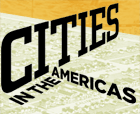
Part I:
Maps Part II:
Southeast Part II: Settlement, Expansion, and the Business of City ViewsI. N. Phelps Stokes’s goal of creating a pictorial record of American history was ambitious but not unrealistic, given 19th-century America’s appetite for images of itself. Stokes had a special weakness for the rarer, 16th- and 17th-century views of the New World’s first cities, as seen in the previous section of the exhibition. However, he quickly realized the potential benefits of putting together a comprehensive collection of views of cities across the United States, supplemented with key views of Canada, South America, and the West Indies. In consultation with noted historians, he compiled a list of 160 towns and cities in the United States, and 40 foreign ones, with the aim of collecting at least one view of each. The expansion of America’s boundaries after the founding of the United States that is recorded in these views coincided with a complex and fundamental shift in the makeup of urban centers all over the Western world, linked to the Industrial Revolution as well as – in the American example – the claiming of territory. Between 1840 and 1890, the percentage of the population living in or near urban areas jumped from 8.5 to 29 percent. In the nascent American imagination, there was, first, ambivalence toward city life, and then, for much of the 19th century as urbanization took hold, a determined intellectual resistance to it. This resistance, however, is not apparent in these predominantly celebratory, often promotional views. Many of the cities, from Boston to Salt Lake City, were established as havens of religious freedom; others, like New Amsterdam and New Orleans, as outposts for trade; still others, like San Francisco or Virginia City, Nevada, for speculation. Some of them grew more or less organically from small fort-like settlements, while others were planned around symmetrical grids from the start. Methods and routes of transportation significant to trade and to settlement – rivers, canals, steamships, and ultimately the railroad – contributed to the explosion of new urban centers across the continent. For the first 200 years of European settlement on the American continents, depictions of the new urban centers were produced largely in Europe for a European audience. Following the American Revolution, immigration from other countries accelerated, and local print production began to take hold as mature artists from England, France, and Germany established themselves on this side of the Atlantic. With the introduction of lithography and the founding of lithographic printing shops across the country starting in the 1820s, prints of the United States were finally being made by an increasingly indigenous work force. The bird’s-eye view became the most distinctive and popular mode of
expression for American city views after 1850. This dramatic format had its
roots in maps and map-like views such as the one of St. Augustine (to your
right), and offered the possibility of showing a place in exacting detail.
This in turn satisfied the purpose of many of these images: to advertise the
businesses and amenities already established in the towns and cities depicted,
and to encourage others to come and join them. |